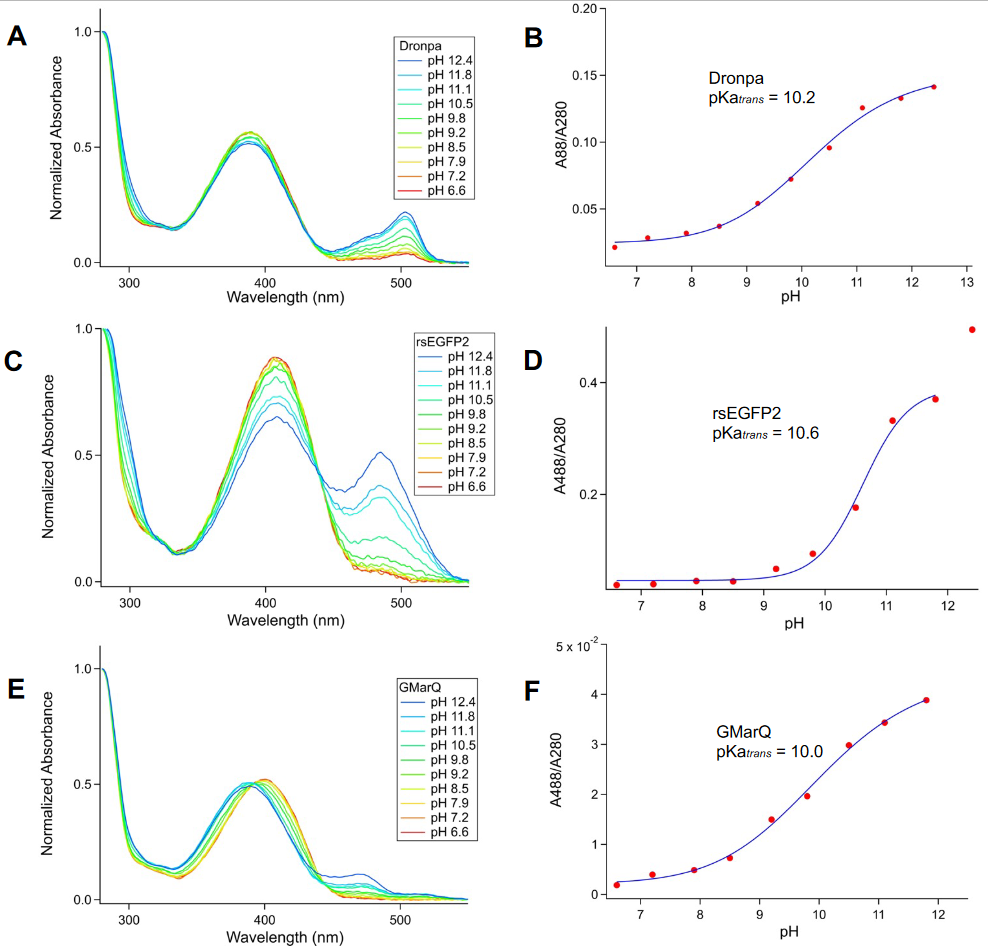
A simple method to estimate the pKa values of four fluorescent proteins based on measuring their pH-dependent absorbance spectra
- Hanoi National University of Education
Abstract
Introduction: The Nobel Prize in Chemistry 2014 greatly recognized the application of fluorescent proteins (FPs) in superresolution imaging techniques. Subsequently, there has been a significant surge in FP-related investigations. Reversibly photoswitchable fluorescent proteins (rsFPs) are currently attracting much interest from scientists worldwide because of their unique ability to switch between bright and dark states. The pH-dependent photophysical behavior of rsFPs is mostly controlled by the equilibrium between four distinct states of the chromophores in FPs: trans-protonated, trans-deprotonated, cis-protonated, and trans-deprotonated. Thus, the pKa values of rsFP in general and its chromophore, in particular, are crucial factors in determining the fluorescence output of the settings containing rsFPs in different environments.
Methods: Here, we measured the absorbance spectra of four rsFPs in various buffers with different pH values to estimate their chromophore pKas. The relationship between the absorbance peak values for the anionic chromophore and pH is plotted, resulting in a sigmoid curve. Then, the apparent pKa of the chromophore is obtained by determining the inflection point of this curve.
Results: The pKa values for the cis-chromophores of two rsFPs (GMarsQ and Skylan-S) were obtained. Specifically, the pKa values for the trans-state of the chromophore in three rsFPs (Dronpa, GMarsQ, and rsEGFP2) were also estimated; these values have rarely been published.
Conclusions: This approach is quite straightforward but effective, enabling us to quickly estimate the pKa values of FPs generally and rsFPs specifically.

